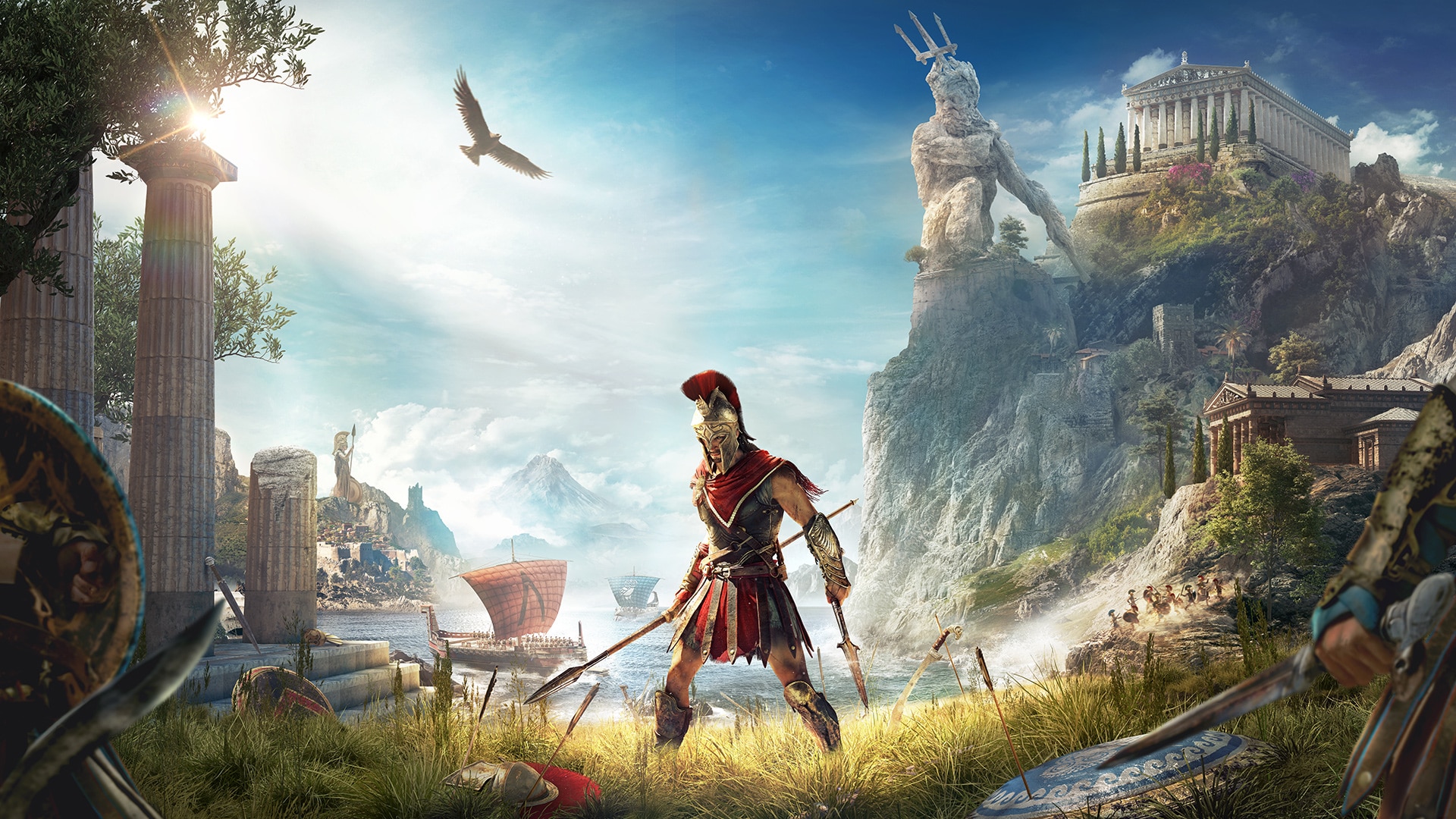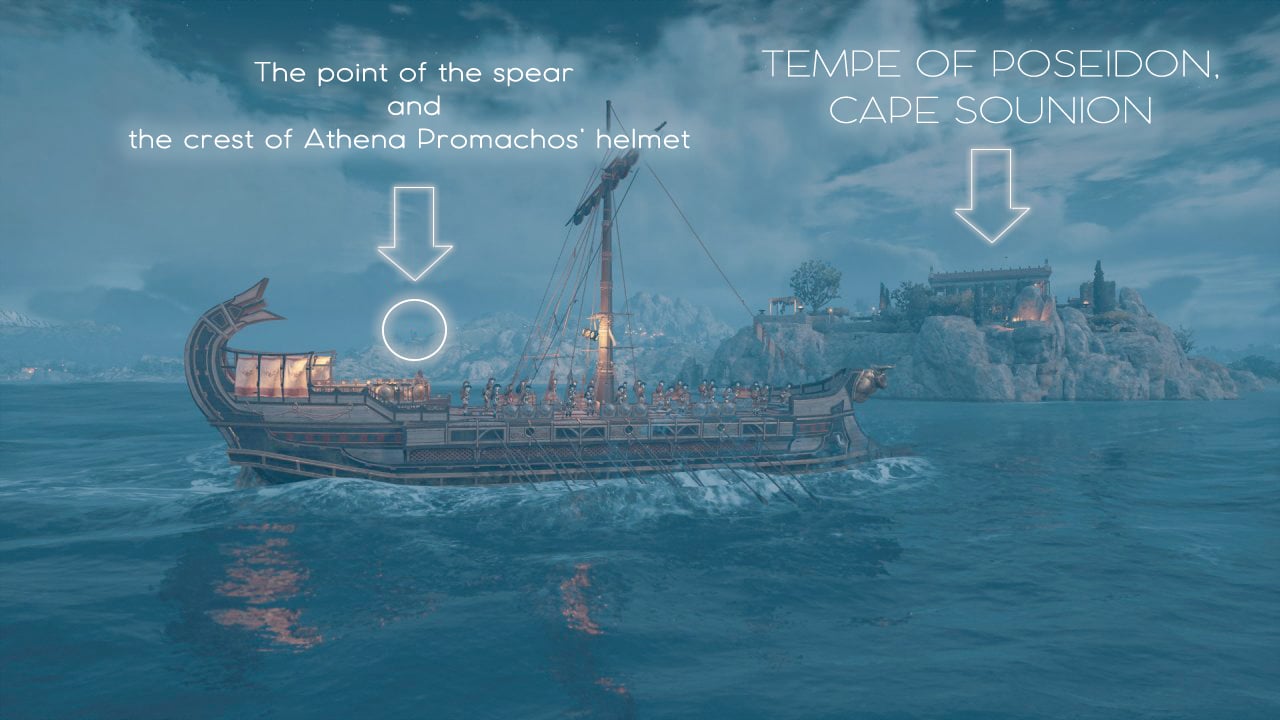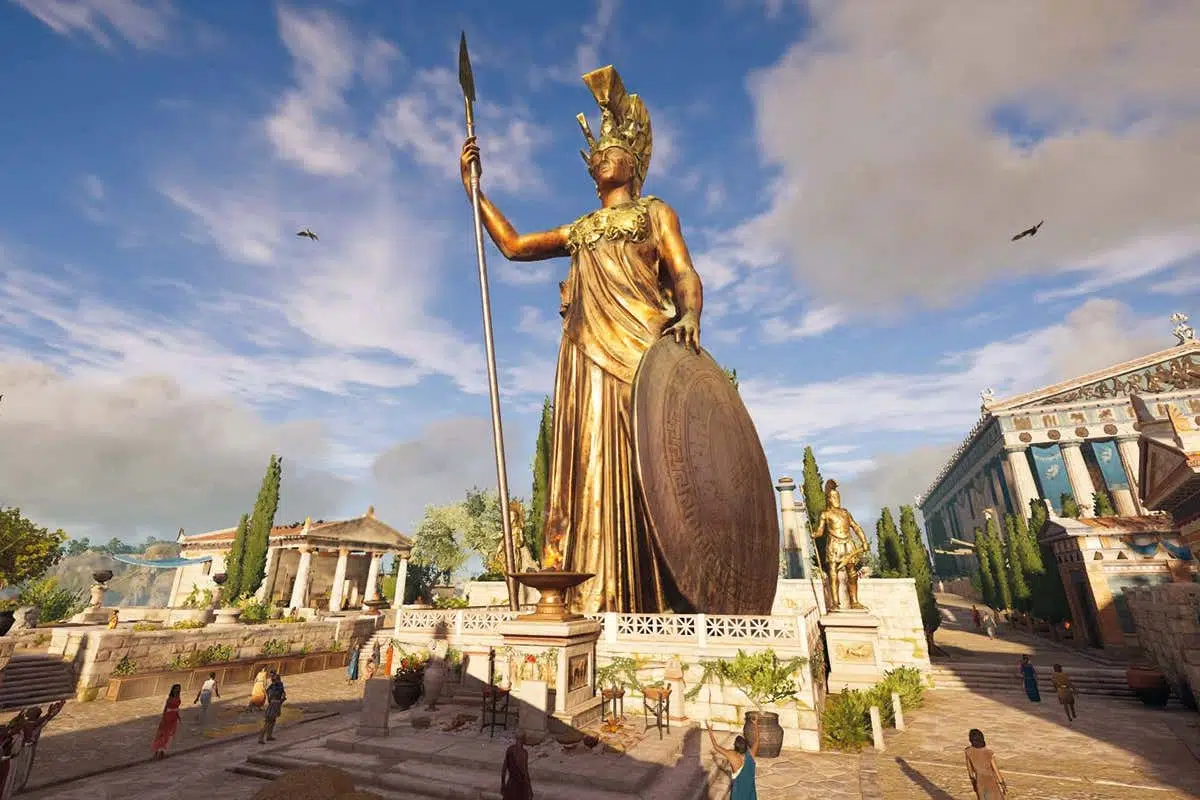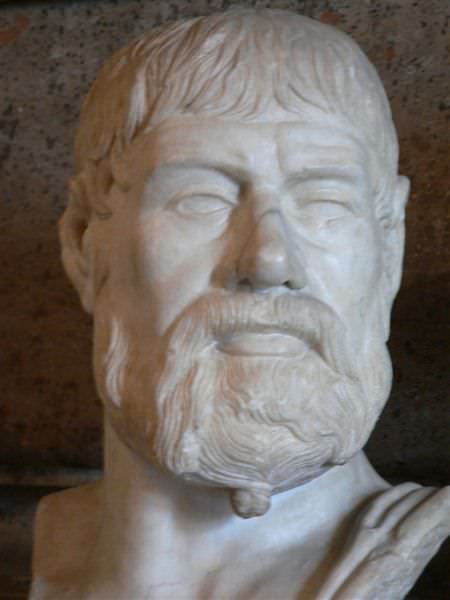
Assassin’s Creed Odyssey has now faithfully carried over worldwide to the new media subculture a wealth of information about ancient Greece, based on the ancient Greek geographer and traveler, Pausanias
By Dimosthenis Vasiloudis
It seems that producers of the well-known Greek-themed video game, Assassin’s Creed Odyssey, pass the history lesson with flying colors! Additional proof of this is a detailed description by the ancient Greek geographer and traveler Pausanias in his so-called lengthy work Description of Greece (Attica, Athens, B 1.28.2) that comes to life in this great game that changed popular culture.
Pausanias’ description is related to the colossal statue of goddess Athena that stood on the Acropolis of Athens, which, according to his testimony, was visible from quite a distance even from the ships sailing off Cape Sounion.
Cape Sounion is the promontory at the southernmost tip of the Attic peninsula. It is eight kilometers, or five miles, south of the town of Lavrio (ancient Thoricus) and almost seventy kilometers, or forty-four miles, southeast of Athens. Cape Sounion is noted for its Temple of Poseidon, one of the major monuments of the Golden Age of Athens. Its remains are perched on the headland, surrounded on three sides by the Aegean Sea.
The Statue of Promachus Athena was a colossal work of sculpture in Ancient Athens. It was placed on the Acropolis between the Propylaea and the Erechtheum and is considered one of the first pieces of art by the famous sculptor Pheidias. It was erected around 456 BC and remained there until the late 5th century AD. According to legend, it is said to have frightened Alaric, leader of the Visigoths, during his invasion of Athens. In this statue, Athena was shown standing and armed as if in battle. Her spear was so large that its height exceeded the Parthenon. The whole artwork was imposing and admirable.
As claimed by Pausanias, the spear (which exceeded the height of the Parthenon) and the crest of her helmet were visible as far as the ships sailing off the coast of Cape Sounion, a constructional excess which was observed in great detail in Odyssey as well despite the annihilation of actual distances in the game.


Here is the original description of Pausanias, translated by W.H.S. Jones:
[1.28.2] In addition to the works I have mentioned, there are two tithes dedicated by the Athenians after wars. There is first a bronze Athena, tithe from the Persians who landed at Marathon. It is the work of Pheidias, but the reliefs upon the shield, including the fight between Centaurs and Lapithae, are said to be from the chisel of Mys, for whom they say Parrhasius the son of Evenor, designed this and the rest of his works. The point of the spear of this Athena and the crest of her helmet are visible to those sailing to Athens, as soon as Sunium is passed. Then there is a bronze chariot, tithe from the Boeotians and the Chalcidians in Euboea. There are two other offerings, a statue of Pericles, the son of Xanthippus, and the best worth seeing of the works of Pheidias, the statue of Athena called Lemnian after those who dedicated it. (“Description of Greece”, Attica, Athens)
The colossal Bronze Statue of Athena Promachos
“The great bronze Athena,” as mentioned by Pausanias, was a well-known Athenian landmark of antiquity. Sculpted by Pheidias, it stood between the Propylaea and the Parthenon. It was a depiction of Athena, goddess of wisdom and warriors. It took almost nine years to construct, and, according to the Greek Byzantine historian Niketas Choniates, it stood at around thirty feet (around nine meters) tall.
It is said that the statue was to be a ‘thanks’ for a victorious war, but there are many disagreements about which war. The statue was either erected to memorialize the Battle of Marathon or the Persian Wars. This is possibly what the dedicatory inscription referred to. The sculpture may have commemorated Kimon’s defeat of the Persians at the Eurymedon in 467 or the peace of Kallias around the years 450 to 449. It has also been suggested that it may have simply been a cult statue and part of the wider cult complex.
Made entirely of bronze, Athena Promachos was spoken of as both ‘the bronze Athena’ and ‘the great bronze Athena,’ in ancient times. The term ‘Promachos’ meaning s/he ‘who fights in the front line’ was not originally used when referring to the statue.

Statue of Athena Transported to Constantinople after 1,000 Years
Athena Promachos stood overlooking her city for approximately one thousand years until shortly after 465 AD, when the sculpture was transported to Constantinople as a trophy in the “Oval Forum.” This became the last bastion and safe haven for many surviving Greek bronze sculptures under the protection of the Eastern Roman Empire’s Imperial Court. Niketas Choniates documented a riot taking place in the Forum of Constantine in Constantinople in 1203 AD during which a large, bronze statue of Athena was destroyed by a “drunken crowd.” It is now thought to have been the Athena Promachos.
Niketas gives a vivid description of the Athena Parthenos:
“The goddess wore an ankle-length garment tightly belted at the waist and over it an aegis, complete with gorgoneion. Her neck was uncovered. On her head she wore a helmet with a horse-hair crest and her hair could be seen escaping from beneath the helmet on to her forehead. At the back, the hair was plaited. Her left hand held the folds of her dress, while the right was outstretched towards the south.” (“Athena Promachos.” Bulletin of the Institute of Classical Studies)
Who was Pausanias?

Pausanias was a Greek traveler and geographer of the 2nd century AD. He is famous for his Description of Greece (Hellados Periegesis), a lengthy work that describes ancient Greece based on firsthand observations. Description of Greece provides crucial information for making links between classical literature and modern archaeology.
Probably of Greek heritage, Pausanias was a native of Lydia in Asia Minor. He was born in 110 AD and lived under the Roman imperial rule. Pausanias traveled almost for three decades through the mainland of Greece, writing about various monuments, sacred spaces, and significant geographical sites along the way. In writing Description of Greece, Pausanias sought to put together a lasting written account of “all things Greek.”
In John Elsner’s article “Pausanias: a Greek Pilgrim in the Roman World” in Past and Present, we read that the Greek traveler was keen to describe the glories of a Greek past that was still relevant in his lifetime even if the country was beholden to the Roman Empire. Pausanias’s pilgrimage through the land of his ancestors was his own attempt to establish a place in the world for this new Roman Greece, connecting myths and stories of ancient culture to those of his own time. In fact, his Description of Greece has been regarded as a “journey into identity,” referring to that of his Greek heritage and beliefs and showing his motivational interest in Greek religion.
Pausanias’ Description of Greece is comprised of ten books each dedicated to some portion of the Greek land, including Attica, Corinthia, Laconia, Messenia, Elia, Achaea, Arcadia, Boeotia, Phocis, and Ozolian Locris. His work is not only topographical or architectural but also reviews the mythological and historical underpinnings of the society that produced them. He tends to comment on the physical aspects of the Greek landscape.
Pausanias was the main source for many archaeologists and antiquarians of the 20th century, including Arthur Evans, Heinrich Schliemann, and Minos Kalokairinos. All of them concluded that Pausanias was a reliable guide to the sites which they were excavating in the Aegean Sea, such as Mycenae, Knossos, and Troy.
By Dimosthenis Vasiloudis
See all the latest news from Greece and the world at Greekreporter.com. Contact our newsroom to report an update or send your story, photos and videos. Follow GR on Google News and subscribe here to our daily email!



